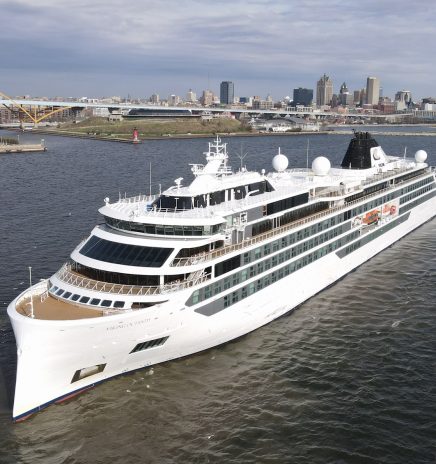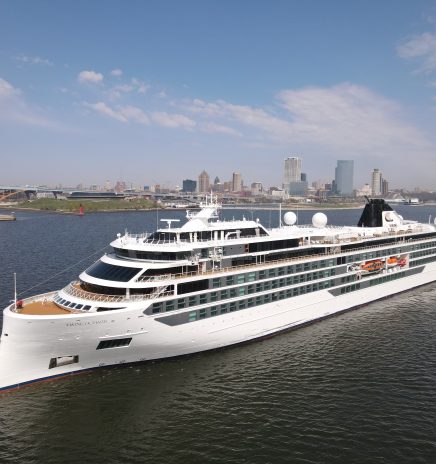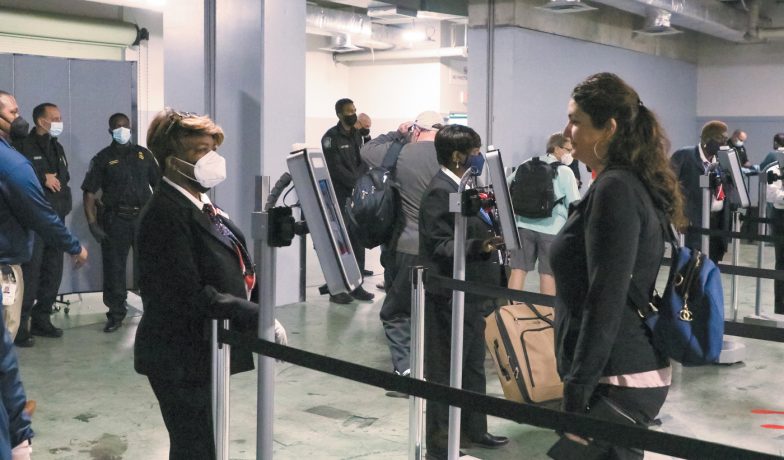Face Time: Facial Biometrics Could Come to Great Lakes Cruising
According to CBP, facial biometric comparison technology is now used in debarkation of closed-loop cruises at 14 seaports across the U.S. in partnership with nine cruise lines. Arriving passengers have been successfully processed at ports in Florida, New Jersey, Texas, California, Washington and Louisiana.
“The biometric process operates at no cost to the ports, as all equipment is purchased, maintained and operated by the cruise line while CBP provides identity verification through facial biometrics,” says Diane Sabatino, deputy assistant commissioner, Office of Field Operations for CBP.
This technology – which has been in use at major air and land ports of entry for several years – now appears to be headed for cruise ports on the Great Lakes. The facial biometric process verifies the traveler’s identity within two seconds in a secure, touchless manner and is more than 98% accurate.
Rebecca Yackley, director, office of trade & economic development for the Great Lakes St. Lawrence Seaway Development Corporation (GLS), emphasizes that “the cruise lines are installing the equipment onboard their ships, not the ports. Right now, we dont have any cruise lines [operating in the Great Lakes] onboard, but we have facilitated meetings involving several cruise lines with hopes that one will jump aboard.”
“We have been considering this technology aboard our vessels,” says Bill Annand, vice president marine operations, lakes, ocean & expedition, at American Queen Voyages. “But given that we have been idle due to Covid, we have not taken the next steps yet to implement it. We recently activated our Ocean Voyager, and Ocean Navigator will follow in March. Both ships will head to the Lakes in April. We hope to start the pilot project on one or both of these ships sometime in the May-June time frame.”
Another line, Viking Cruises, currently employs facial biometric technology on a vessel operating out of Florida, so it may use the technology when Viking Octantis and Viking Polaris come into the Great Lakes/Seaway later in 2022.
In addition, the new CBP facility, recently completed at the Port of Cleveland, is ready for operation this summer.
“CBP is excited for the enhancements planned at the cruise facility,” Sabatino says. “CBP seeks to expand public-private partnerships in all areas [of the country] including the Great Lakes.”
How Does It Work?
Biometric identification has been used for decades think fingerprints. The technology has advanced to include other identifiers, like voice recognition, iris scans and facial recognition. Facial recognition has developed into sophisticated mathematical representations and matching processes. Its use within the travel industry setting stems from the 9/11 Commission Report, which instructed CBP to biometrically confirm visitors into and out of the United States.
Sabatino explains, “U.S. CBP has a Congressional mandate to biometrically record all foreign nationals who enter and exit the United States. Years of testing have demonstrated that the expansion of biometric facial comparison technology through public-private partnerships is the most secure, efficient and cost-effective way to fulfil the mandate while protecting the privacy of all travelers. CBP has built a facial biometric matching service, known as the Traveler Verification Service (TVS) to support its entry/exit mission.”
Now, amidst Covid concerns and travel restrictions, biometric identification also facilitates social distancing and contactless interactions.
“In the maritime environment,” says Sabatino, “when arriving at select seaports, passengers pause for a photo before they depart the cruise ship. In a matter of seconds, CBPs biometric facial comparison service automatically compares the new photos of the traveler to images that the traveler has already provided to the government, such as passport and visa photos. Travelers who do not wish to participate in the facial biometric process simply notify a CBP officer, request a manual document check and are processed for entry into the U.S. The biometric process is voluntary for U.S. citizens.”
In compliance with CBPs requirements, industry partners deploy their own camera operators and technologies that meet CBPs technical specifications to capture the facial images and then use CBPs Traveler Verification Service for identity confirmation. Photos of U.S. citizens are required to be purged within 12 hours; photos of foreign travelers who are statutorily required to provide biometrics are stored in a secure U.S. Department of Homeland Security database.
“As cruise travel resumes around our nation, CBP is working closely with the industry to make travel safer and more efficient,” says Steven Stavinoha, director, field operations for CBPs Gulf Coast Field Office. “The biometric facial comparison process adds an extra layer of security and streamlines travel into the U.S. by replacing manual inspection of travel documents with a secure, touchless process.”
Canadian Connections
In June 2021, the Canada Border Services Agency (CBSA) invited proposals from technology firms for assistance in developing a biometrics strategy. CBSA looks to open an Office of Biometrics and Identity Management with an estimated start-up this summer.
Canada earmarked $656 million for investment in facial recognition, fingerprint biometrics and other technologies by CBSA in its 2021 budget. The agency has stated that privacy considerations are at the forefront of its biometric verification methods.
“Our cruise partners have shared that there have been many positive comments in the post-cruise satisfaction surveys completed by travelers,” U.S. CBPs Sabatino says. “Specifically, travelers are pleased with the new streamlined debarkation process using facial biometrics, given the time savings when departing the cruise ship at the end of the voyage.”

Great Lakes Ports to Welcome Thousands of Cruise Passengers This Season
Another passenger cruising season is well underway on the Great Lakes-St. Lawrence Seaway. According to Cruise the Great Lakes, the region’s cruise marketing program, more than 22,000 individual passengers are... Read More

Great Lakes St. Lawrence Governors and Premiers Hires New Tourism Director
The Great Lakes as a cruising destination has seen a rise in popularity over the past few years, and Cathleen Domanico’s goal is that this trend will continue for the... Read More



